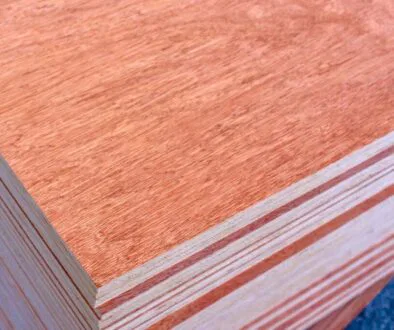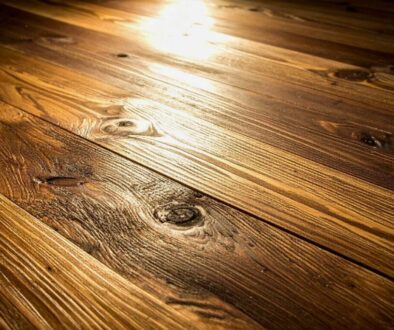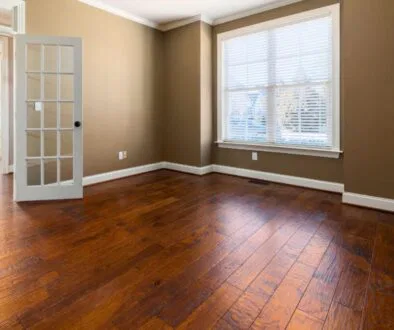Wood Floor Water Damage: The Ultimate Guide
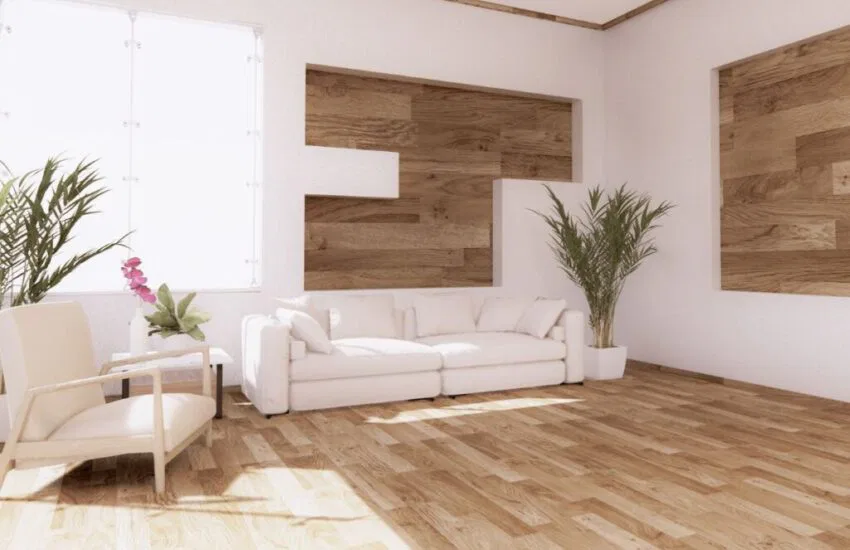
Published January 29, 2025
Wood floors impart timeless elegance and charm to any home, but exposure to water can quickly turn their beauty into an expensive problem. If moisture isn’t addressed promptly, it can lead to warping, unsightly stains, and even structural damage. Preserving your floors requires more than simple appreciation. It demands quick action and thoughtful preventative care to ensure they remain stunning for years.
In this article, we’ll explain how to identify wood floor water damage, its causes, immediate steps to reduce damage, long-term repair strategies, and preventive measures.
What Is Water Damage?
Water damage happens when too much moisture seeps into wood surfaces, leading to visible and structural problems. Think discoloration, warping, or even mold creeping in. Left unchecked, it can quickly turn a minor issue into a big headache. Knowing the severity of the damage can help you decide if it’s time for a quick fix or a complete replacement.
Identifying Water Damage On Wood Floors
Wood floor water damage is a serious concern that can lead to warping, discoloration, and even long-term structural issues. Early detection is essential to avoid expensive repairs and preserve the beauty of your flooring.
Signs Of Water Damage
- Discoloration. Look for dark patches or water stains that stand out from the rest of the floor.
- Cupping and crowning. Cupping occurs when the edges of floorboards rise, creating a concave shape. Crowning is the opposite, with the center of the board curving upward.
- Buckling. This occurs when boards pull away from the subfloor, sometimes rising several inches.
- Mold and mildew. Musty odors or dark spots can signal mold growth on or beneath the wood.
- Gaps and cracks. Prolonged moisture exposure can cause the wood to shrink, split, or crack.
Types Of Water Damage
- Surface damage. Often caused by spills or minor leaks, this type affects only the top layer of the wood.
- Subfloor damage. Persistent water exposure can seep below the surface, damaging the subfloor beneath the boards.
- Severe saturation. Prolonged flooding or heavy water exposure can lead to extreme issues such as warped or buckled boards.
By recognizing these warning indications and understanding the types of damage, you can take proactive steps to address water issues before they escalate.
Causes Of Water Damage
Water damage can stem from floods, storms, leaks, burst pipes, or clogged gutters. Knowing these common causes can help you avoid costly repairs and protect your property.
Internal Causes
- Plumbing problems. Burst pipes can release water. Leaking appliance connections and malfunctioning water heaters can do the same. This often leads to hidden water buildup over time.
- Condensation buildup. Poor ventilation, particularly in basements, can result in excess moisture and water pooling on surfaces.
External Causes
- Natural disasters. Floods and hurricanes can overwhelm homes. They saturate wooden floors and cause significant damage.
- Roof and window leaks. Rainwater can enter through damaged roofs or poorly sealed windows. It seeps indoors and creates puddles, which can damage wood flooring.
By staying proactive and addressing these risks, you can lower the chances of water damage and keep your property protected.
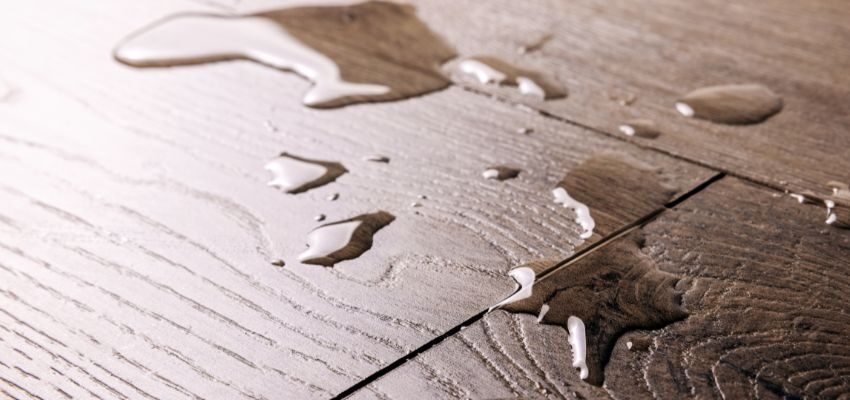
Immediate Steps To Take After Water Damage
Water damage can escalate quickly, leading to significant problems if not addressed promptly. Acting promptly is crucial to lessen damage and prevent further complications. Here are steps to help you take control.
Assess The Damage
- Evaluate the impact. To determine the severity, inspect the affected areas for signs of moisture, mold, or structural damage.
- Identify and stop the source. Find the source of the water intrusion and take immediate action to stop it. Shut off the water supply or seal any leaks to prevent more damage.
Timely Action To Minimize Damage
- Remove standing water. Utilize a wet/dry vacuum or a mop to eliminate puddles. Be cautious not to apply too much pressure on surfaces to avoid exacerbating the damage.
- Dry the area thoroughly. Improve airflow using fans, dehumidifiers, or open windows and doors for cross-ventilation. Gradual moisture reduction is key to preventing mold growth.
- Protect your belongings. Move furniture, rugs, and valuables to a dry area. This prevents staining, warping, or saturation of materials.
Following these steps can effectively mitigate water damage and set the stage for proper restoration.
Long-Term Solutions For Wood Floor Repair
Wood floors are a timeless integration to any space, but they may develop scratches, dents, or water damage over time. Addressing these issues restores their charm and ensures long-lasting durability.
Here’s how to revive and maintain your wood floors:
Drying And Restoring Damaged Floors
- Be patient. Allow water-damaged wood to air dry naturally for at least a week before proceeding. Using heat to speed up the process may cause the wood to crack.
- When to refinish. Minor issues like light cupping or surface imperfections can be fixed. Sanding and refinishing usually work once the moisture content is stable.
- Handling cupping or crowning. Sand down slight warping or unevenness, but only after the wood has dried completely to avoid further damage.
Replacing Severely Damaged Sections
Replacement is usually the best solution for boards that are warped, buckled, or affected by mold. Boards that have lifted several inches from the subfloor or show signs of mold growth should also be removed. Make sure the subfloor is fully dry and stable before installing replacement boards.
Eliminating Mold And Mildew
Use specialized cleaners, such as trisodium phosphate (TSP), to effectively remove mold. Always don protective gloves and ensure the area is thoroughly dried afterward to prevent mold from returning.
Follow these measures to restore your wood floors. Keep them beautiful and functional for years to come. Make them a standout feature in your home.
Preventive Measures For Protecting Wood Floors
Preventing water damage is the first step in maintaining the elegance and durability of your wooden floors. Here are some practical steps to help you safeguard your flooring and avoid costly repairs.
Regular Maintenance And Inspections
- Inspect for leaks. Regularly check plumbing, appliances, and fixtures for any signs of leaks or moisture.
- Seal and refinish. Apply a protective polyurethane coating to shield your wood floors from spills, stains, and everyday wear.
Precautions For High-Risk Areas
- Use waterproof mats. Place durable, waterproof mats in spill-prone areas such as entryways, kitchens, and near sinks.
- Control humidity. Use dehumidifiers in damp basements or humid spaces. Reduce moisture and protect your floors.
Be Ready For Emergencies
- Install water alarms. Equip your home with leak detection alarms to catch water issues before they escalate.
- Have cleanup tools accessible. Keep wet/dry vacuums and fans on hand to tackle unexpected water exposure quickly and effectively.
By following these preventive tactics, you can prolong the life of your wood floors and maintain their timeless appeal.
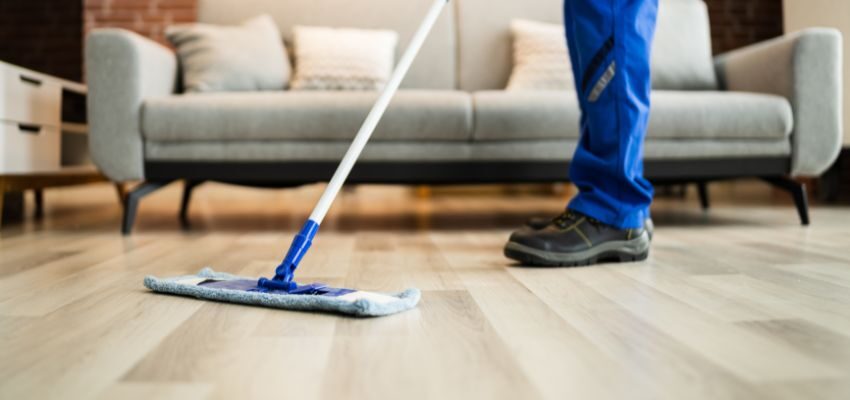
Stay Ahead Of Wood Floor Water Damage
Water damage can be a homeowner’s nightmare, but you can minimize its impact with quick action and proper preventive care. By recognizing warning signs, addressing immediate risks, and implementing long-term maintenance plans, you’ll be better prepared to maintain and preserve your hardwood floors for years. Taking action today to prevent wood floor water damage can save you significant stress and costs in the future.
Hire The Timber Experts For Your Next Project
Vintage & Specialty Wood should be your source of the highest quality timbers from around the world. When it comes to fabricating and installing reclaimed wood or specialty wood products in your home, we don’t cut corners. We offer many reclaimed wood and specialty wood products such as Douglas Fir, white oak, and much more. We also offer timber framing and wood flooring services as well. Contact our team today to speak to a timber expert about what Vintage & Specialty Wood can do for you.
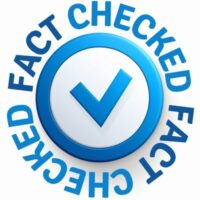
This Blog Is Fact Checked
This content has undergone meticulous fact-checking by our team of internal experts. Gain a deeper understanding of the high editorial standards we uphold on our website here.

About The Author
Experience, exploration, and knowledge are the hallmarks of writer Rei Bayucca. Her dedication to crafting articles that both inspire and educate will leave you thinking long after you’ve finished reading.

